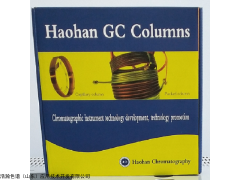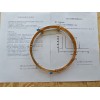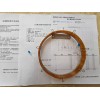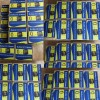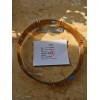PLOT 硅膠 毛細管柱測氣態(tài)制冷劑 10 種鹵代烴
如果你感興趣的話
,可以電話:0632-5667636
產品名稱:PLOT 硅膠 毛細管柱測氣態(tài)制冷劑 10 種鹵代烴
產品型號:PLOT 硅膠
產品廠商:浩瀚色譜(山東)應用技術開發(fā)有限公司
簡單介紹
PLOT 硅膠 毛細管柱測氣態(tài)制冷劑 10 種鹵代烴的詳細介紹
毛細管柱測氣態(tài)制冷劑 10 種鹵代烴 詳細信息:
名稱:毛細管柱
規(guī)格:60m*0.32mm
型號:多孔層開管毛細管柱PLOT 硅膠
應用:氣態(tài)制冷劑 10種鹵代烴的測定 氣相色譜-質譜法
1 適用范圍
本標準規(guī)定了測定氣態(tài)制冷劑中三氟甲烷(HFC-23)、二氟甲烷(HFC-32)
本標準適用于氣態(tài)制冷劑中 HFC-23
、HFC-32、HFC-125、HFC-143a、CFC-12、HCFC-22、HFC-134a、HFC-152a、HCFC-124 和HCFC-142b 體積分數的測定,不適用于上述化合物純度的測定。當取樣量為 20.0 μl
,10 種鹵代烴的方法檢出限為 0.08%~0.09%;測定下限為 0.32%~0.36%。詳見附錄 A。 2 規(guī)范性引用文件
本標準引用了下列文件或其中的條款
。凡是注明日期的引用文件,僅注日期的版本適用于本標準。凡是未注日期的引用文件,其新版本(包括所有的修改單)適用于本標準。GB/T 3723 工業(yè)用化學產品采樣安全通則
GB/T 6678 化工產品采樣總則
GB/T 6681 氣體化工產品采樣通則
GB/T 26571 特種氣體儲存期規(guī)范
GB/T 37994 混合制冷劑采樣通則
SN/T 2537 進出口制冷劑檢驗取樣方法
3 術語和定義
下列術語和定義適用于本標準
。3.1
制冷劑 refrigerant
在制冷系統(tǒng)中用于傳遞熱量的流體
,在低溫低壓環(huán)境吸收熱量,在高溫高壓環(huán)境釋放熱量,通常伴有相變過程。3.2
氣態(tài)制冷劑 gaseous refrigerant
在溫度 20 ℃和壓力 101.3 kPa 下呈氣態(tài)的制冷劑。
4 方法原理
在一定的溫度條件下
,樣品中的目標化合物在頂空進樣瓶中混合并達到平衡后,經氣相色譜分離
除非另有說明
5.1 三氟甲烷(HFC-23),純度≥99.5%
,存儲于鋼瓶中,參照證書相關說明保存。5.2 二氟甲烷(HFC-32)
,純度≥99.5%,存儲于鋼瓶中,參照證書相關說明保存。5.3 五氟乙烷(HFC-125)
,純度≥99.5%,存儲于鋼瓶中,參照證書相關說明保存。5.4 1,1,1-三氟乙烷(HFC-143a)
,純度≥99.5%,存儲于鋼瓶中,參照證書相關說明保存。5.5 二氯二氟甲烷(CFC-12)
,純度≥99.0%,存儲于鋼瓶中,參照證書相關說明保存。5.6 一氯二氟甲烷(HCFC-22)
,純度≥99.6%,存儲于鋼瓶中,參照證書相關說明保存。5.7 1,1,1,2-四氟乙烷(HFC-134a)
5.8 1,1-二氟乙烷(HFC-152a),純度≥99.5%
5.9 1-氯-1,2,2,2-四氟乙烷(HCFC-124)
5.10 1-氯-1,1-二氟乙烷(HCFC-142b)
5.11 內標化合物:1,1,1,2,3,3,3-七氟丙烷(HFC-227ea)
5.12 4-溴氟苯(BFB)溶液:ρ(C6H4BrF)=25 mg/L
5.13 氮氣
5.14 載氣:氦氣
,純度≥99.999%。 6 儀器和設備
6.1 取樣導管:采用不銹鋼或其他耐腐蝕金屬管或聚四氟乙烯塑料管制作而成
。取樣前,將取樣導管置于 110 ℃烘箱中烘烤 1 h6.2 氣袋:氟聚合物薄膜氣袋或鋁塑復合膜氣袋
6.3 減壓閥:安裝于樣品小鋼瓶瓶口,用于實驗室取樣時的氣體減壓
6.4 氣相色譜-質譜儀:色譜部分具有分流/不分流進樣口
6.5 頂空自動進樣器:具備定量環(huán)或進樣針進樣功能
6.6 頂空進樣瓶:瓶體為玻璃材質,密封墊為聚四氟乙烯/硅橡膠材質
6.7 色譜柱:多孔層開管毛細管柱
6.8 注射器:氣密性注射器
6.9 一般實驗室常用儀器和設備
7.1 樣品采集與保存
樣品采集前首先了解采集樣品的實際情況,樣品采集參照GB/T 6678
樣品存儲于非重復充裝鋼瓶或重復充裝鋼瓶(容積W10 L,以下簡稱“小鋼瓶”)時
采集的小鋼瓶樣品在常溫密封條件下運輸和保存,在裝卸運輸過程中
注:使用氣袋釆樣前,應檢查并確保氣袋(6.2)密封性良好
;用氮氣(5.13)清洗3次后備用;采樣時,先用樣品氣清洗氣袋(6.2) 3次,再釆集樣品.7.2 試樣的制備
小鋼瓶樣品:先用氮氣(5.13)清洗氣袋(6.2) 3次
,再用樣品置換氣袋(6.2) 3次,待用讓適量的氣體樣品轉移氣袋(6.2)中
毛細管柱測氣態(tài)制冷劑 10 種鹵代烴 測試譜圖:


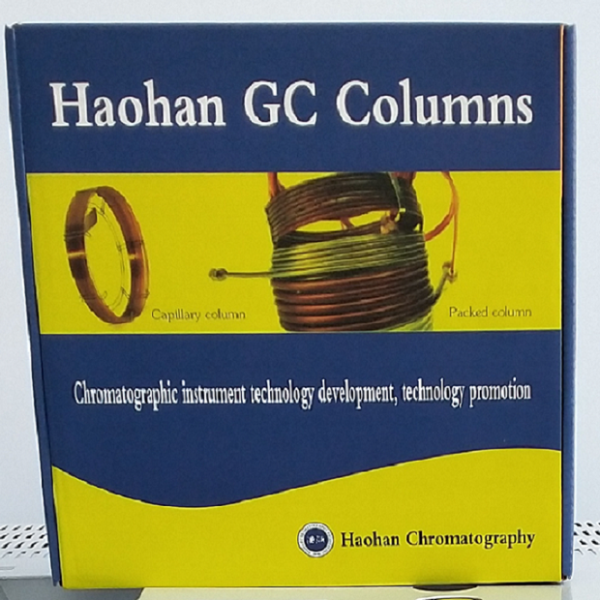

Capillary column measurement of gaseous refrigerants 10 kinds of halogenated hydrocarbons
Capillary column measurement of gaseous refrigerants 10 kinds of halogenated hydrocarbons Details:
Name: Capillary Column
Specification: 60m*0.32mm
Model: Porous layer open tube capillary column PLOT silica gel
Application: gaseous refrigerant determination of 10 halogenated hydrocarbons gas chromatography-mass spectrometry
1 Scope of application
This standard specifies the determination of trifluoromethane (HFC-23), difluoromethane (HFC-32), pentafluoroethane (HFC-125), 1,1,1-trifluoroethane (HFC- 143a), dichlorodifluoromethane (CFC-12), mo
This standard applies to the volume fraction of HFC-23, HFC-32, HFC-125, HFC-143a, CFC-12, HCFC-22, HFC-134a, HFC-152a, HCFC-124 and HCFC-142b in gaseous refrigerants. The determination is not suitable for the determination of the purity of the above-mentio
When the sampling volume is 20.0 μl, the detection limit of the method for 10 halogenated hydrocarbons is 0.08%~0.09%; the lower limit of determination is 0.32%~0.36%. See Appendix A for details.
2 Normative references
This standard refers to the following docu
GB/T 3723 General rules for the sampling safety of industrial chemical products
GB/T 6678 General Rules for Sampling of Chemical Products
GB/T 6681 General Rules for Sampling of Gas Chemical Products
GB/T 26571 Special Gas Storage Period Specification
GB/T 37994 General Rules for Sampling of Mixed Refrigerants
SN/T 2537 Sampling method for im
3 Terms and definitions
The following terms and definitions apply to this standard.
3.1
Refrigerant
The fluid used to transfer heat in the refrigeration system absorbs heat in a low-temperature and low-pressure environment, and releases heat in a high-temperature and high-pressure environment, usually accompanied by a phase change process.
3.2
Gaseous refrigerant
It is a gaseous refrigerant at a temperature of 20 ℃ and a pressure of 101.3 kPa.
4 Principles of the method
Under certain temperature conditions, the target compounds in the sample are mixed in the headspace sample bottle and reach equilibrium, then separated by gas chromatography and detected by a mass detector. It is qualitatively compared with the retention time of the standard substance and the mass spectrum, and quantified by the internal standard method.
5 Reagents and materials
Unless otherwise specified, analytical reagents co
5.1 Trifluoromethane (HFC-23), purity ≥99.5%, stored in a steel cylinder, refer to the relevant instructions of the certificate for storage.
5.2 Difluoromethane (HFC-32), purity ≥99.5%, stored in a steel cylinder, refer to the relevant instructions of the certificate for storage.
5.3 Pentafluoroethane (HFC-125), purity ≥99.5%, stored in a steel cylinder, refer to the relevant instructions of the certificate for storage.
5.4 1,1,1-Trifluoroethane (HFC-143a), purity ≥99.5%, stored in a steel cylinder, refer to the relevant instructions of the certificate for storage.
5.5 Dichlorodifluoromethane (CFC-12), purity ≥99.0%, stored in a steel cylinder, refer to the relevant instructions of the certificate for storage.
5.6 Mo
5.7 1,1,1,2-Tetrafluoroethane (HFC-134a), purity ≥99.5%, stored in a steel cylinder, refer to the relevant instructions of the certificate for storage.
5.8 1,1-Difluoroethane (HFC-152a), purity ≥99.5%, stored in a steel cylinder, refer to the relevant instructions of the certificate for storage.
5.9 1-Chloro-1,2,2,2-tetrafluoroethane (HCFC-124), purity ≥99.5%, stored in a cylinder, refer to the relevant instructions of the certificate for storage.
5.10 1-Chloro-1,1-difluoroethane (HCFC-142b), purity ≥99.5%, stored in a steel cylinder, refer to the relevant instructions of the certificate for storage.
5.11 Internal standard compound: 1,1,1,2,3,3,3-heptafluoropropane (HFC-227ea), purity ≥99.6%, stored in a cylinder, refer to the relevant instructions of the certificate for storage.
5.12 4-Bromofluorobenzene (BFB) solution: ρ(C6H4BrF)=25 mg/L, the solvent is a commercially available certified standard solution of methanol, and it should be stored in accordance with the relevant instructions of the standard solution certificate.
5.13 Nitrogen, purity ≥99.999%.
5.14 Carrier gas: helium, purity ≥99.999%.
6 Apparatus and equipment
6.1 Sampling catheter: made of stainless steel or other corrosion-resistant me
6.2 Air bag: fluoropolymer film air bag or aluminum-plastic composite film air bag, with a micro-syringe sampling valve, with a sampling tube (6.1) connector, the sampling valve has the function of opening and closing the air bag at the same time.
6.3 Pressure reducing valve: installed at the mouth of the sample small steel bottle, used for gas pressure reduction during laboratory sampling.
6.4 Gas Chromatograph-Mass Spectrometer: The chromatographic part has a split/splitless inlet, and the column oven can be programmed to increase temperature; the mass spectrometer has a 70 eV electron bombardment ion source.
6.5 Headspace autosampler: It has the function of sampling loop or injection needle.
6.6 Headspace sampling bottle: the bottle body is made of glass, the sealing gasket is made of PTFE/silicone rubber, and the sealing cap is screw cap or disposable gland, 20 ml, or with the headspace autosampler (6.5) Matching glass bottle. Tighten (press) the sealing cap before use to ensure the air tightness of the headspace sample bottle.
6.7 Chromatographic column: a porous layer open-tube capillary column, 60 m (column length) × 0.32 mm (inner diameter), the statio
6.8 Syringe: air-tight syringe, glass material, 10.0 μl, 25.0 μl, 250 μl, 500 μl, 100 ml.
6.9 Commo
7 samples
7.1 Sample collection and storage
Before sample collection, first understand the actual situation of the collected samples. For sample collection, refer to the relevant regulations of GB/T 6678, GB/T 6681 and GB/T 37994, and for sample storage, refer to the relevant regulations of GB/T 26571 and SN/T 2537.
When the samples are stored in non-refillable cylinders or refilled cylinders (volume W10 L, hereinafter referred to as "small cylinders"), they shall be taken according to the production batch, and one small cylinder sample shall be taken from the same batch number and transported back to the laboratory; the samples shall be stored in When storing tanks, tank trucks or refilling steel cylinders (volume> 10L), one can (bottle) is sampled from the same batch number. When sampling, co
The collected small steel cylinder samples are transported and stored under sealed co
Note: Before using the air bag for sampling, check and ensure that the air bag (6.2) is well sealed; clean with nitrogen (5.13) for 3 times and then reserve; when sampling, first clean the air bag (6.2) with sample gas for 3 times, and then Collect samples.
7.2 Preparation of test samples
Small cylinder sample: first clean the air bag (6.2) with nitrogen (5.13) 3 times, then replace the air bag (6.2) with the sample 3 times, and then set aside. Co
Transfer an appropriate amount of gas sample to the gas bag (6.2). See Figure 1 for a schematic diagram of sample sampling from a small steel cylinder. Use an air-tight syringe (6.8) to remove a 20.0 M sample from the above air bag and put it into the headspace sample vial (6.6) through a sealing gasket, and add 1,1,1, to the headspace sample vial (6.6). 2,3,3,3-Heptafluoropropane internal standard (5.11) 10.0μl, to be tested.
Capillary column test gaseous refrigerant 10 kinds of halogenated hydrocarbon test spectrum:
相關產品
在線留言 |








